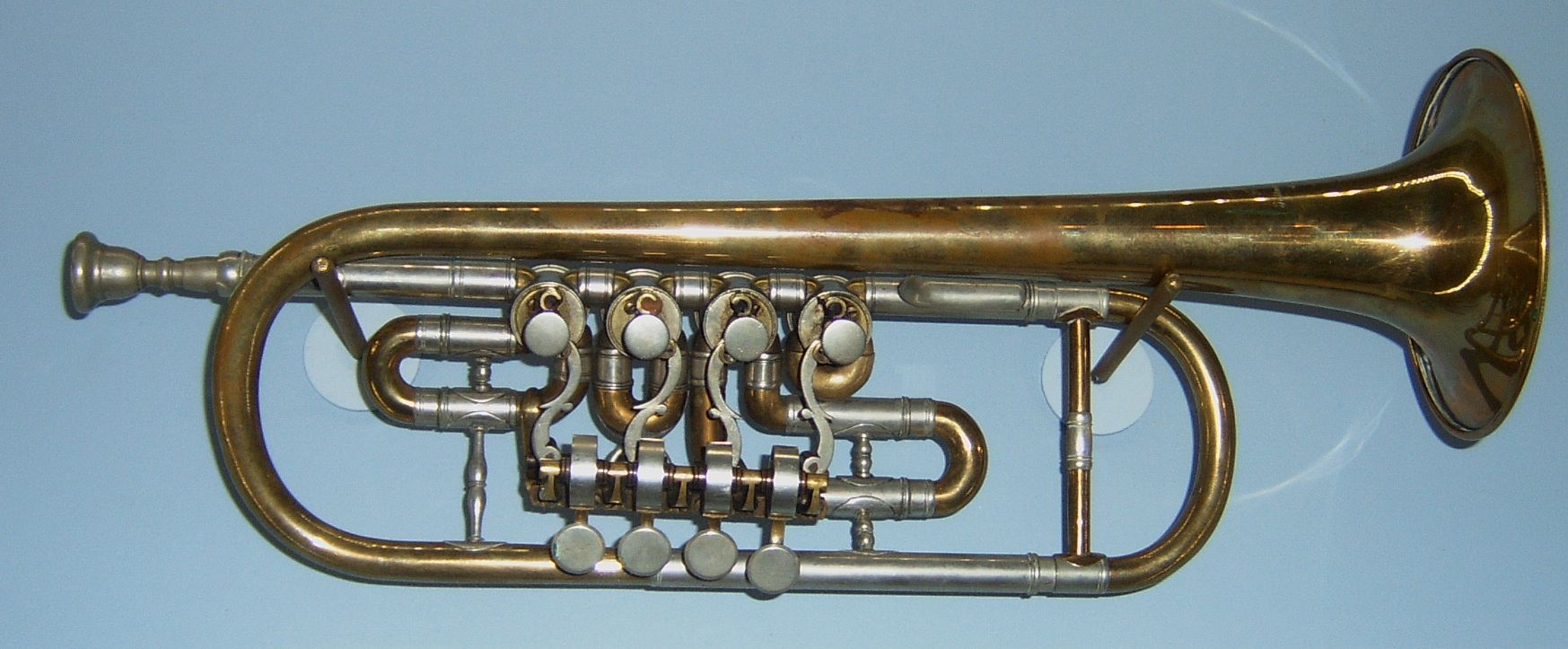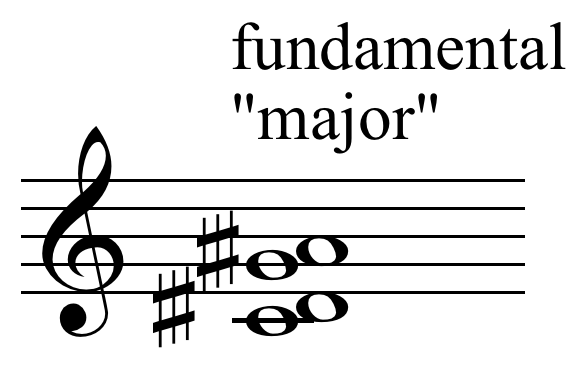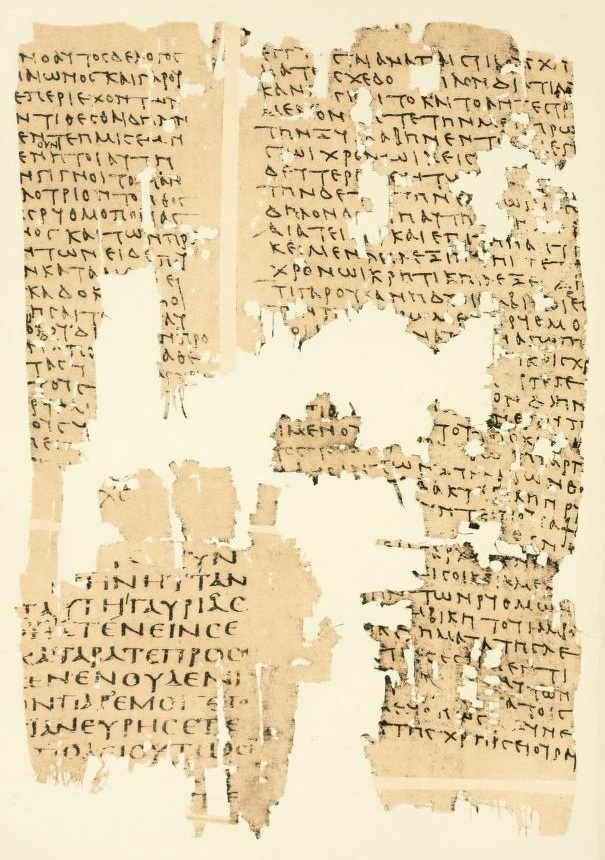|
Microtonality
Microtonality is the use in music of microtones — intervals smaller than a semitone, also called "microintervals". It may also be extended to include any music using intervals not found in the customary Western tuning of twelve equal intervals per octave. In other words, a microtone may be thought of as a note that falls "between the keys" of a piano tuned in equal temperament. Terminology Microtone ''Microtonal music'' can refer to any music containing microtones. The words "microtone" and "microtonal" were coined before 1912 by Maud MacCarthy Mann in order to avoid the misnomer "quarter tone" when speaking of the srutis of Indian music. Prior to this time the term "quarter tone" was used, confusingly, not only for an interval actually half the size of a semitone, but also for all intervals (considerably) smaller than a semitone. It may have been even slightly earlier, perhaps as early as 1895, that the Mexican composer Julián Carrillo, writing in Spanish or French ... [...More Info...] [...Related Items...] OR: [Wikipedia] [Google] [Baidu] |
Quarter Tone
A quarter tone is a pitch halfway between the usual notes of a chromatic scale or an interval about half as wide (orally, or logarithmically) as a semitone, which itself is half a whole tone. Quarter tones divide the octave by 50 cents each, and have 24 different pitches. Quarter tones have their roots in the music of the Middle East and more specifically in Persian traditional music. However, the first evidenced proposal of the equally-tempered quarter tone scale, or 24 equal temperament, was made by 19th-century music theorists Heinrich Richter in 1823 Julian Rushton, "Quarter-Tone", ''The New Grove Dictionary of Music and Musicians'', second edition, edited by Stanley Sadie and John Tyrrell (London: Macmillan, 2001). and Mikhail Mishaqa about 1840. Composers who have written music using this scale include: Pierre Boulez, Julián Carrillo, Mildred Couper, George Enescu, Alberto Ginastera, Gérard Grisey, Alois Hába, Ljubica Marić, Charles Ives, Tristan Murail, Kr ... [...More Info...] [...Related Items...] OR: [Wikipedia] [Google] [Baidu] |
Shruti (music)
The ''shruti'' or ''śruti'' is the smallest interval (music), interval of pitch (music), pitch that the human ear can detect and a singer or musical instrument can produce. The concept is found in ancient and medieval Sanskrit texts such as the ''Natya Shastra'', the ''Dattilam'', the ''Brihaddeshi'', and the ''Sangita Ratnakara''. ''Chandogya Upanishad'' speaks of the division of the octave in 22 parts. The ''swara'' differs from the ''shruti'': the ''shruti'' is the smallest gradation of pitch available, while a ''swara'' is the selected pitch (music), pitches from which the musician constructs the scale (music), scales, melody, melodies and ''ragas''. The ''Natya Shastra'' identifies and discusses twenty two ''shruti'' and seven ''swara'' per octave. It has been used in several contexts throughout the history of Indian music. Recent research has more precisely defined the term ''shruti'', its difference from ''nada'' and ''swara'', and identified positions on a strin ... [...More Info...] [...Related Items...] OR: [Wikipedia] [Google] [Baidu] |
Quarter Tone
A quarter tone is a pitch halfway between the usual notes of a chromatic scale or an interval about half as wide (orally, or logarithmically) as a semitone, which itself is half a whole tone. Quarter tones divide the octave by 50 cents each, and have 24 different pitches. Quarter tones have their roots in the music of the Middle East and more specifically in Persian traditional music. However, the first evidenced proposal of the equally-tempered quarter tone scale, or 24 equal temperament, was made by 19th-century music theorists Heinrich Richter in 1823 Julian Rushton, "Quarter-Tone", ''The New Grove Dictionary of Music and Musicians'', second edition, edited by Stanley Sadie and John Tyrrell (London: Macmillan, 2001). and Mikhail Mishaqa about 1840. Composers who have written music using this scale include: Pierre Boulez, Julián Carrillo, Mildred Couper, George Enescu, Alberto Ginastera, Gérard Grisey, Alois Hába, Ljubica Marić, Charles Ives, Tristan Murail, Kr ... [...More Info...] [...Related Items...] OR: [Wikipedia] [Google] [Baidu] |
Ives Fundamental Chord (quarter Tones)
Ives is both a surname and a given name. Notable people with the name include: Surname * Alice Emma Ives (1876–1930), American dramatist, journalist * Burl Ives (1909–1995), American singer, author and actor * Charles Ives (1874–1954), American composer * Charles Ives (footballer) (1907–1942), football player from New Zealand * Chauncey Ives (1810–1894), American sculptor in Italy * Clarrie Ives (1890–1956), Australian rugby league footballer * Clay Ives (born 1972), Canadian-born American luger * David Ives (born 1950), contemporary American playwright * Dick Ives (1926–1997), American basketball player * Edward D. Ives (1925–2009), American folklorist * Edward Ives (toymaker) (1839–1918), U.S. toymaker * Edward Ives (rower) (born 1961), American Olympic oarsman * Edward H. Ives (1819–1892), Wisconsin politician * Eric Ives (1931–2012), English historian * Eugene S. Ives (1859–1917), New York and Arizona politician * F. Badger Ives (1858–1914), Wisconsin ... [...More Info...] [...Related Items...] OR: [Wikipedia] [Google] [Baidu] |
The New Grove Dictionary Of Music And Musicians
''The New Grove Dictionary of Music and Musicians'' is an encyclopedic dictionary of music and musicians. Along with the German-language '' Die Musik in Geschichte und Gegenwart'', it is one of the largest reference works on the history and theory of music. Earlier editions were published under the titles ''A Dictionary of Music and Musicians'', and ''Grove's Dictionary of Music and Musicians''; the work has gone through several editions since the 19th century and is widely used. In recent years it has been made available as an electronic resource called ''Grove Music Online'', which is now an important part of ''Oxford Music Online''. ''A Dictionary of Music and Musicians'' ''A Dictionary of Music and Musicians'' was first published in London by Macmillan and Co. in four volumes (1879, 1880, 1883, 1889) edited by George Grove with an Appendix edited by J. A. Fuller Maitland in the fourth volume. An Index edited by Mrs. E. Wodehouse was issued as a separate volume in 189 ... [...More Info...] [...Related Items...] OR: [Wikipedia] [Google] [Baidu] |
Harvard Dictionary Of Music
''The Harvard Dictionary of Music'' is a standard music reference book published by the Belknap Press of Harvard University Press. The first edition, titled ''Harvard Dictionary of Music'', was published in 1944, and was edited by Willi Apel. The second edition, also edited by Apel, was published in 1969. A new editor, Don Michael Randel, took over for the third edition in 1986. The book was retitled ''The New Harvard Dictionary of Music'', and featured expanded coverage of 20th century music, twentieth-century and List of art music traditions, non-Western music, and including information on jazz and popular music for the first time. For the fourth edition (2003, also edited by Randel), the book reverted to the earlier title (with the article added), ''The Harvard Dictionary of Music''. Unlike some other standard music reference books, ''The Harvard Dictionary of Music'' includes no biographical entries. Biographical information may be found in a companion volume, ''The Harvard ... [...More Info...] [...Related Items...] OR: [Wikipedia] [Google] [Baidu] |
Aristoxenus
Aristoxenus of Tarentum (; born 375, fl. 335 BC) was a Ancient Greece, Greek Peripatetic school, Peripatetic philosopher, and a pupil of Aristotle. Most of his writings, which dealt with philosophy, ethics and music, have been lost, but one musical treatise, ''Elements of Harmony'' (Greek: ; Latin: ''Elementa harmonica''), survives incomplete, as well as some fragments concerning rhythm and Metre (music), meter. The ''Elements'' is the chief source of our knowledge of Music of ancient Greece, ancient Greek music. Life Aristoxenus was born at Taranto, Tarentum (in modern-day Apulia, southern Italy) in Magna Graecia, and was the son of a learned musician named Spintharus (otherwise Mnesias). He learned music from his father, and having then been instructed by Lamprus of Erythrae and Xenophilus (philosopher), Xenophilus the Pythagorean, he finally became a pupil of Aristotle, whom he appears to have rivaled in the variety of his studies. According to the ''Suda'', he heaped insults ... [...More Info...] [...Related Items...] OR: [Wikipedia] [Google] [Baidu] |
Diesis
In classical music from Western culture, a diesis ( or enharmonic diesis, plural dieses ( , or "difference"; Greek: "leak" or "escape" is either an accidental (see sharp), or a very small musical interval, usually defined as the difference between an octave (in the ratio 2:1) and three justly tuned major thirds (tuned in the ratio 5:4), equal to 128:125 or about 41.06 cents. In 12-tone equal temperament (on a piano for example) three major thirds in a row equal an octave, but three justly-tuned major thirds fall quite a bit narrow of an octave, and the diesis describes the amount by which they are short. For instance, an octave (2:1) spans from C to C′, and three justly tuned major thirds (5:4) span from C to B (namely, from C, to E, to G, to B). The difference between C-C′ (2:1) and C-B (125:64) is the diesis (128:125). Notice that this coincides with the interval between B and C′, also called a diminished second. As a comma, the above-mentioned 128:125 r ... [...More Info...] [...Related Items...] OR: [Wikipedia] [Google] [Baidu] |
Schisma
In music, the schisma (also spelled ''skhisma'') is the interval between the syntonic comma (81:80) and the Pythagorean comma which is slightly larger. It equals or ≈ 1.00113, which corresponds to 1.9537 cents (). It may also be defined as: * the difference (in cents) between 8 justly tuned perfect fifths plus a justly tuned major third and 5 octaves; * the ratio of major limma to the Pythagorean limma; * the ratio of the syntonic comma and the diaschisma. ''Schisma'' is a Greek word meaning a split or crack (see schism) whose musical sense was introduced by Boethius at the beginning of the 6th century in the 3rd book of his ''De institutione musica''. Boethius was also the first to define the diaschisma. Andreas Werckmeister defined the ''grad'' as the twelfth root of the Pythagorean comma, or equivalently the difference between the justly tuned fifth (3:2) and the equally tempered fifth of 700 cents (2). This value, 1.955 ... [...More Info...] [...Related Items...] OR: [Wikipedia] [Google] [Baidu] |
Comma (music)
In music theory, a comma is a very small interval (music), interval, the difference resulting from Musical tuning, tuning one note (music), note two different ways. Traditionally, there are two most common commata; the syntonic comma (80:81), "the difference between a just intonation, just major 3rd and four just perfect 5ths less two octaves", and the Pythagorean comma (524288:531441, approximately 73:74), "the difference between twelve 5ths and seven octaves". The word ''comma'' used without qualification refers to the syntonic comma, which can be defined, for instance, as the difference between an F tuned using the D-based Pythagorean tuning system, and another F tuned using the D-based quarter-comma meantone tuning system. Pitches separated by either comma are considered the same note because conventional notation does not distinguish Pythagorean intervals from 5-limit intervals. Other intervals are considered commas because of the enharmonic equivalences of a tuning system. ... [...More Info...] [...Related Items...] OR: [Wikipedia] [Google] [Baidu] |
Diaschisma
The diaschisma (or diacisma) is a small interval (music), musical interval defined as the difference between three octaves and four perfect fifths plus two just major third, major thirds (in just intonation). It can be represented by the ratio 2048:2025 and is about 19.5 cent (music), cents. The use of the name diaschisma for this interval is due to Hermann Helmholtz, Helmholtz; earlier Jean-Philippe Rameau, Rameau had called that interval a "diminished comma" or comma minor. A diaschisma is the difference between a schisma and a syntonic comma, as well as the difference between the greater chromatic semitone (135:128 = 92.18 cents) and the just minor second (16:15 = 111.73 cents).(1897). Columbian cyclopedia, Volume 9', np. Garretson, Cox & Company. pre-ISBN. Medieval theorists Anicius Manlius Severinus Boethius, Boethius and Tinctoris described the diaschisma as one-half of the Pythagorean minor second, or 256/243, which would make the other half either 25/24 (70.67 cents) or a ... [...More Info...] [...Related Items...] OR: [Wikipedia] [Google] [Baidu] |





